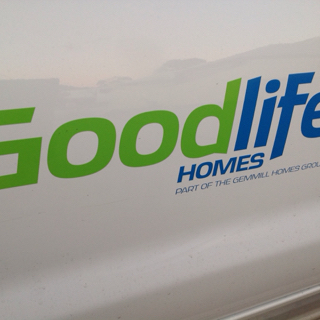Title Page
-
Document No.
-
Audit Title
-
Client / Site
-
Conducted on
-
Prepared by
-
Location
-
Personnel
AS/NZS 2067 Requirements
AS/NZS 2067-2008 Requirements
-
As per AS/NZS 2067, there are minimum safety requirementsto ensure a safe area is maintained for both electrical operation & electrical workers.
Electrical
-
Thermal-image the switchboard. Is there evidence of major heat spots?
-
No access available to live components of any voltage?
-
Is there adequate ventilation for battery or UPS compartments?
Earthing
-
HV ONLY - Earth cables minimum 35mm in diamater?
-
LV ONLY - Earth cables minimum 25mm in diamater?
-
Are all metallic parts in the switchroom bonded to earth?
-
All metallic exposure guards earthed?
Housekeeping & Safety
-
Is there a clear >600mm access zone around the switchboard (including distance of an open panel)?
-
Is there sufficient labelling warning of electrical risks? (i.e. "DANGER - 415 VOLTS AC")
-
Evidence of water damage to the board?
-
Egress paths from the switchboard are safe, unobstructed?
Misc
-
Are there any further issues with the board that need rectification (i.e. Lighting, ventilation, messy areas)?
National Construction Code Requirements
National Construction Code Requirements
-
As stipulated in AS/NZS 2067 Section 5.5, electrical switchrooms shall comply with the requirements of the Building Council of Australia's National Construction Code (NCC). BCA Class 8 buildings are used as a guide.
-
Do all egress paths around the switchboard have sufficient battery-backed exit lighting?
-
Is there sufficient emergency lighting in the switchboard cupboard (where applicable)?
-
Is the external area to the switchboard free from blockages (i.e. vehicles, gardens, etc) within 1 metre, either existing or potential?
AS/NZS 3000 Requirements
AS/NZS 3000 Requirements
-
As per AS/NZS 3000, there are minimum safety requirements in a switchroom to ensure a safe area is maintained for both electrical operation & electrical workers.
Safety
-
Is there minimum 600mm clearance between the all electrical (open) panels and other obstructions (such as other panels, walls, fences, pits)?
-
Do all panels require a tool to gain access to live parts?
-
Are all switchboard doors & panels secure and in good condition?
-
Is there a secondary egress path for boards with capacity over 800A, length >3m or fault current of >15kA?
-
Is the board in a location where smoke or fire could impact egress from a building?
-
Are the seals around the switchboard suitable to contain smoke and fire in the event of a failure (minimum IP5X)?
-
Are there any exposed or easily accessible live parts?
-
Switchboard is not in a hazardous area?
-
Fire panel operational and fault-free?
-
Is the switchboard labelled correctly?
Electrical
-
Are all isolation points clearly marked?
-
Are all final circuits RCD protected?
-
Have all RCD circuit breakers tested within the last 12 months?
-
Are all gap fillers installed securely, with no outstanding gaps?
-
Are safety services (lifts, fire, etc) separated from general power distribution?
-
As per section 7.2, it is critical that safety services are not at risk of isolation due to fault in another part of the electrical system.
-
Are dual feeds correctly labelled?
-
Have all instances of nuisance tripping (since last audit) been investigated and rectified (where necessary)?
-
Is there suitable segregation between circuits in cable tray/conduit?
-
Are cable trays secure, no rust/degradation and earthed at all non-bolted joints?
-
Are all circuits labelled correctly?
-
Earths identified & correctly labelled?
-
Do circuits into Hazardous Areas comply with AS/NZS 60079?
-
All power circuit must be protected by 30mA protection, with appropriate glanding. Final circuit equipment must be suitably rated. If you are unsure, isolate the circuit and consult your supervisor.
Switchboard Area Lighting
-
Is lighting sufficient around the switchboard?
-
160lux or greater is recommended for general electrical tasks.
400lux or greater is recommended for electrical maintenance work, and can be achieved by task lighting. -
Are all light fittings operational (i.e. no blown bulbs or elements)?
-
Are light fixtures secure from damage?
-
Is emergency lighting around the switchboard sufficient?
-
It is recommended that an emergency lighting level of >1lux is present. This can be achieved by using battery-backed fluoro or LED tubes, spitfires or similar fixtures.
Electrical Parameters
-
Red-Earth Voltage:
-
Blue-Earth Voltage:
-
White Phase Voltage:
-
Neutral-Earth Voltage:
-
Power Factor:
-
Red Phase Current:
-
Blue Phase Current:
-
White Phase Current:
Miscellaneous
-
Are there any other issues that need raising?
Drawings
Drawing Set
-
Is there a folder of drawings present in the board?
-
Are there red-line markups present?
-
Add photos of redline markups present.
-
Add a comment about the redline markups present
-
Do redlines in DFM and field match?
Finalise Audit
Finalise Audit
-
Are there any Danger, Isolation, Hazard or Information tags in the switchboard?
-
If yes, please ensure you take photos of each tag (both sides).
-
Are there any other issues in the Switchboard that should be noted?
-
Ensure that this report is emailed to #######@cqu.edu.au for actioning of any outstanding items.
Sign off by auditor.
-
Switchboard checked by:
-
Signature:














